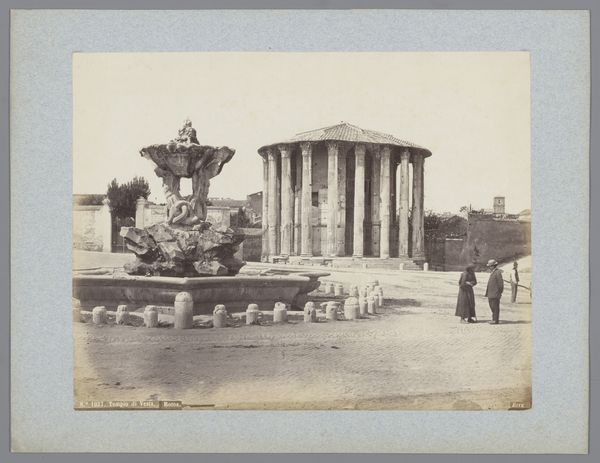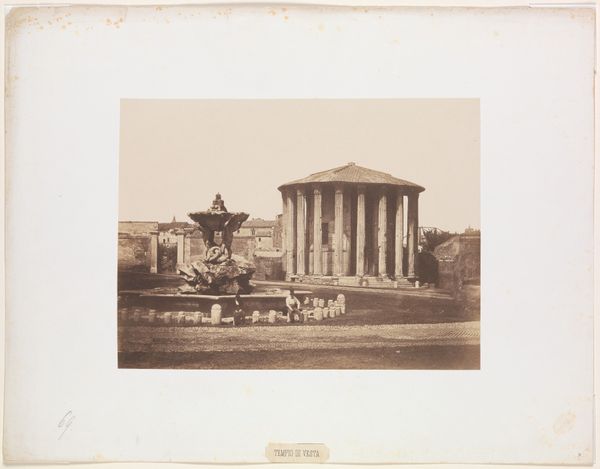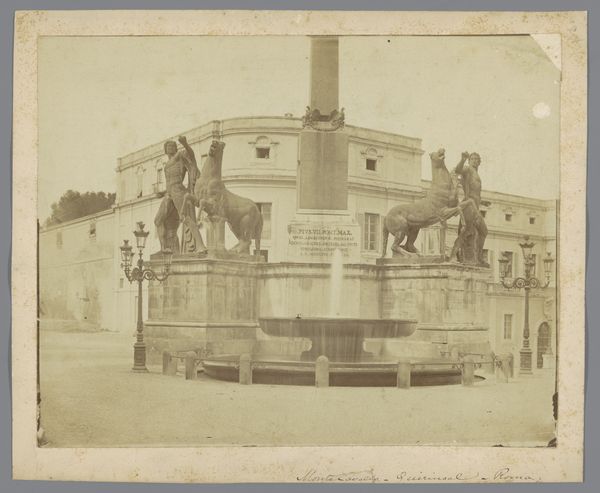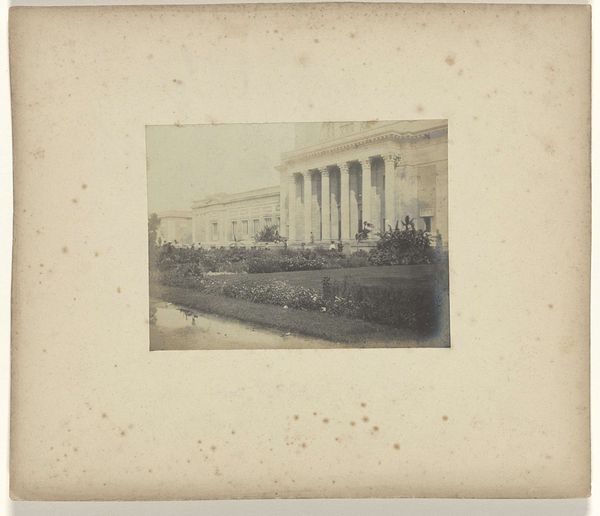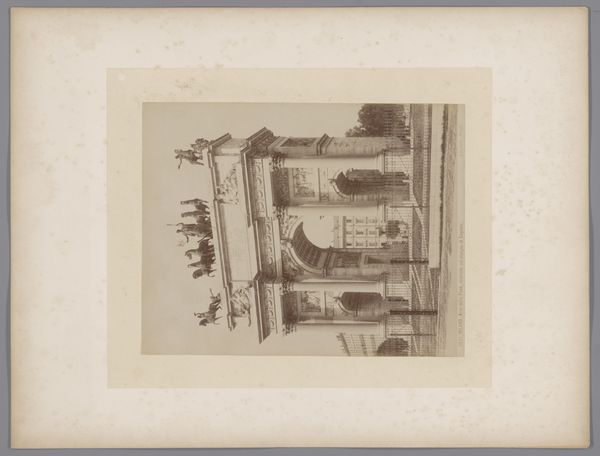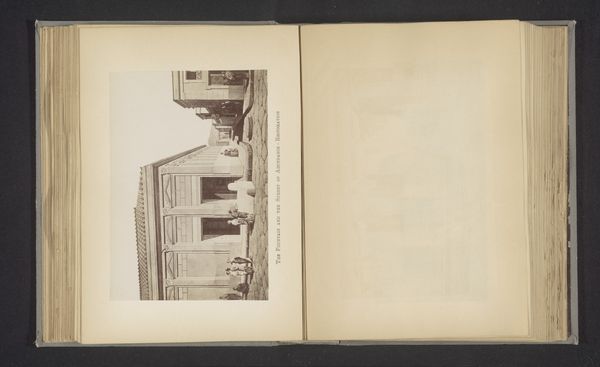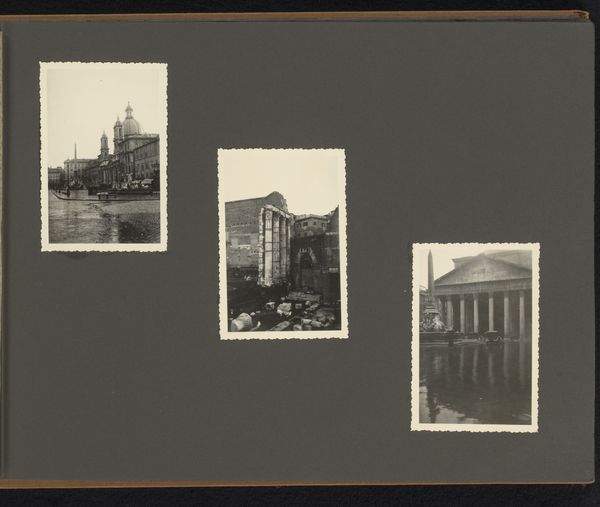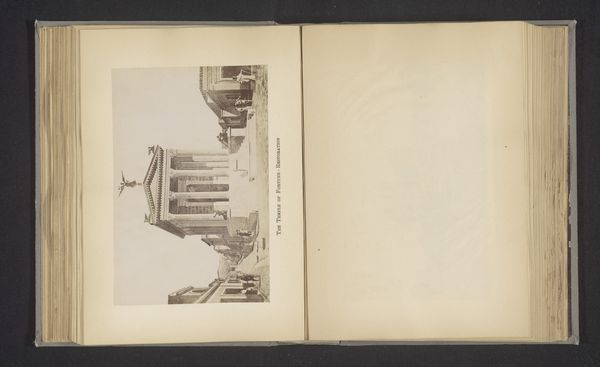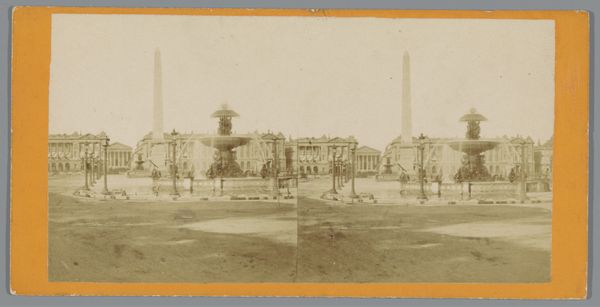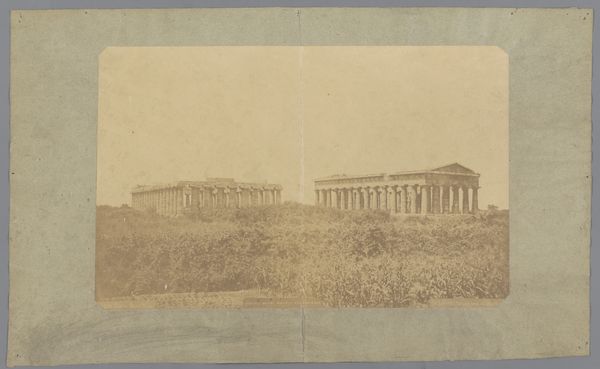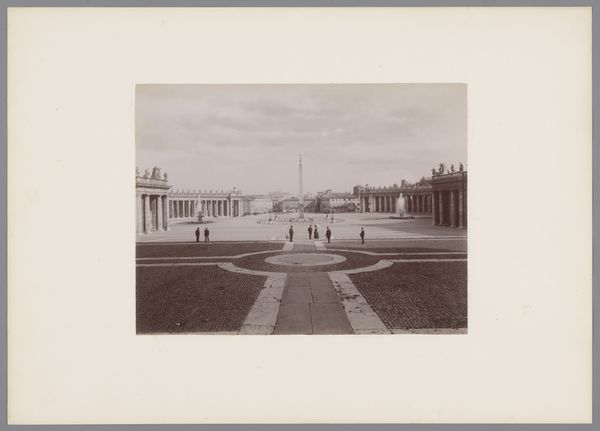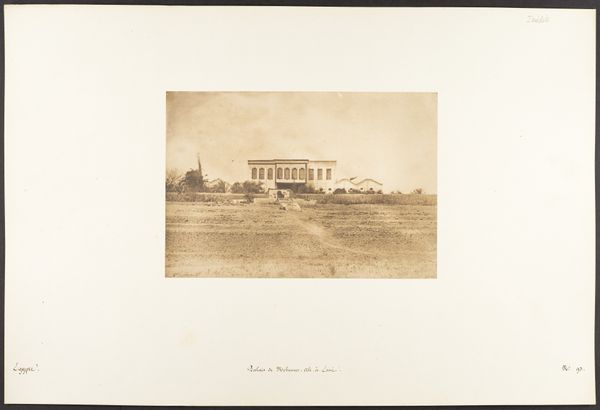
Tempel van Hercules Invictus op het Forum Boarium te Rome, Italië 1852 - 1900
0:00
0:00
Dimensions: height 96 mm, width 143 mm, height 168 mm, width 223 mm
Copyright: Rijks Museum: Open Domain
Editor: Here we have a gelatin-silver print by Fratelli Alinari, taken between 1852 and 1900. It's a view of the Tempel van Hercules Invictus at the Forum Boarium in Rome. The clarity of the print is striking. What aspects of this photograph particularly resonate with you? Curator: What I see here is more than just a documentation of a classical ruin. The Alinari brothers were active participants in shaping a specific, often romanticized, vision of Italian heritage. We must remember that this image emerges from a historical context deeply entangled with notions of national identity and colonial power. Editor: Could you expand on that a bit? I hadn't considered the colonial aspects. Curator: Absolutely. The allure of classical antiquity was instrumental in constructing a narrative of European superiority, a lineage often invoked to justify imperial ambitions. These images weren’t simply neutral records; they actively participated in that cultural project. What do you observe about the human presence, or lack thereof, in the photograph? Editor: It's interesting that you point that out. The emptiness gives the monument a sense of timelessness, almost as if untouched by history, but you are saying the exact opposite. It makes it seem as though people did not exist here. Curator: Exactly. This deliberate framing is not accidental. It sanitizes history, erasing the messy realities of daily life, of power struggles, and of the marginalized voices that shaped the very landscape depicted. In its quiet stillness, it promotes a particular narrative, silencing others. Editor: So, looking at it through that lens, the photograph becomes a kind of statement itself, beyond just an image. Curator: Precisely. And that, in turn, prompts us to question the role of photography in constructing and perpetuating such narratives. What stories are being told, and whose voices are being left out? Editor: That gives me a lot to think about when considering historical photographs from now on! Thank you!
Comments
No comments
Be the first to comment and join the conversation on the ultimate creative platform.

